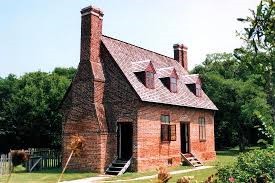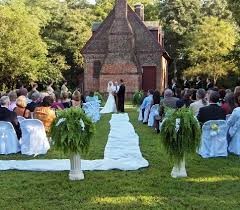Lynnhaven House
Introduction
Text-to-speech Audio
Images
View of the House

Wedding that was going on at the House.

Backstory and Context
Text-to-speech Audio
The Lynnhaven House, located at 4409 Wishart Road in Virginia Beach, is like stepping into a time machine. You will be treated to a 45 to 60 minute guided tour, which is given by well-informed volunteers attired in 18th century clothing. You will discover just how people survived without all the new fangled technology of today. Forget microwave ovens and televisions! The house, remaining true to its roots, does not have any running water or electricity. Think of how life used to be! Many of the staff have even cooked in the fireplaces in order to experience just how difficult even the simplest of tasks were. The women of yesterday certainly were hard workers. Many of the crafts and skills of yesterday are still practiced on the grounds, all of which help to make the time come alive for visitors.
The Virginia Beach Lynnhaven House was built around the year 1725 by the Thelaball Family. The 18th century home has had very few changes made throughout the years and is estimated to still have 85% of its original materials. This makes it one of the country's best-preserved buildings from that time period. The house was often referred to as the Wishart or Boush House in the past, but finally settled on the Lynnhaven name due to its close proximity to the Lynnhaven River. The house is on more than five acres of land and boasts lush woods, as well as gardens. You will see things like cotton, flax, peanuts, herbs and tobacco all growing on the property grounds.
This house reflects the social and economic status of Francis Thelaball, a middling plantation owner who built it for his family. This home provides a glimpse into the life of middle-class planter rather than a wealthy plantation owner. Francis, his wife Abigail, their five sons, an apprentice, and several enslaved people all lived in the house from 1725-1727. While relatively little is known about Francis and his wife Abigail, much more is known about Francis' cousin, Joyce Langley Thelaball who was born in 1694. Architectural and design details including brick jack arches, a close-spindle staircase with teardrop pendant, and ship's lap floor construction reveal a builder concerned with quality as well as artistry.Behind the historic house lies a small cemetery with plots that date back to the American Revolutionary War. This 19th-century burial ground of the Boush family stands watch to the south of the house that the family once owned, and is why the house is sometimes referred to as the Boush House.
Enjoy the interpretations of colonial life and take in some history of the pioneers that helped make life in this great country possible by taking a little time on your next vacation to visit the historic landmark of the Virginia Beach Lynnhaven House. No Virginia Beach Vacation is complete without a little trip back in time. Guests of all ages will enjoy a tour of the house as well as the brand new gift shop on the grounds, which offers interesting collectibles
